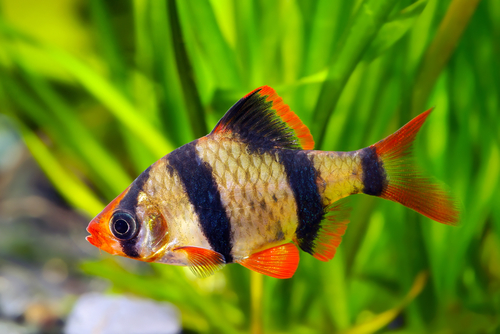One of the biggest challenges that researchers have today is coming up with new names for fish that are still being discovered!
The letter T is a popular choice to start the name of new fish, with hundreds and hundreds of different species having a T name for themselves already.
Below we highlight 75 of the most popular fish on the planet that have a name starting with T, shining a light on 10 of the most unique options living in our oceans, our lakes, our ponds, and our rivers that would be a perfect match for your aquarium.
Let’s take right in, shall we?
Contents
Popular Fish That Start with T
Other similar posts:
- Popular Fish Starting With K
- Popular Fish That Start With A
- Popular Fish That Start With M
- Popular Fish That Start with L
1. Tadpole Cod

The tadpole cod – one of a multitude of different fish belonging to the cod family – is the smaller version of the cod that most folks are well aware of (a cod beloved for its sport, game, and commercial benefits).
Like its North Atlantic cousin the Atlantic cod, tadpole cod are found in very deep water conditions – generally off the oceanic islands of New Zealand as well as throughout the mid South Atlantic.
Unlike its North Atlantic cousin, though, this fish is considerably smaller than many of the other fish in the cod family (which is why it’s called the “tadpole” in the first place). These fish – when full-grown and mature adults – reach lengths of about 7 inches or so on average.
Because of the small size of this cod, and because of the deep water conditions it lives in, it doesn’t have to worry about the same kind of fishing pressure that larger species of cod inevitably do.
This fish is thriving right now, with populations that have grown year after year ever since it was first discovered in 1986.
2. Tarpon

Tarpon are a very unique species of fish (with only two species in the family, and the only major difference being where those fish are found), but that’s to be expected from a fish that’s been on the planet for nearly 120 million years.
Capable of reaching some pretty impressive sizes (growing between 4 feet and 8 feet long and weighing anywhere between 60 pounds and 280 pounds), these fish look sort of like a cross between an alligator and a dolphin.
Loving warm, isolated areas to call their own – though these fish will push into cooler water outside of the breeding season – tarpon have the unique ability to do quite well in both salt and freshwater conditions.
In fact, it isn’t at all uncommon to find these fish doing really well in particularly brackish water, as well as water with wildly changing pH levels and even low levels of dissolved oxygen as well.
Considered by anglers the world over to be one of the greatest saltwater fish to catch, tarpon are beloved for their size, the fight that they put up, and the way that they will leap out of the water while hooked in an effort to try and free themselves. It takes considerable skill to land a tarpon, that’s for sure.
Because tarpon meat isn’t all that desirable the overwhelming majority of tarpon are released after they have been caught, measured, and photographed. The oceans are absolutely brimming with trophy winning tarpon that anglers have multiple opportunities to catch for themselves.
3. Temperate Bass

Temperate bass are a bit of an oddity, looking a lot like the kind of bass you might fish for in your favorite lakes and ponds – though some species of this kind of fish can be found in brackish water as well as saltwater, too.
Of course, temperate bass are almost immediately recognized as a completely different species than their “cousins” the largemouth bass or the smallmouth bass the moment that they are hooked.
These fish are considerably longer than those freshwater fish, growing up to 39 inches in length. Temperate bass also have significantly larger comb scales that protect their head and body, with two short spines covering up their gills as well.
One thing that these past-due have in common with the rest of their “cousins” is a particularly aggressive predisposition. These fish love to consume other (smaller) fish – including fathead minnows, threadfin shad, young sunfish, carp, and anything else they can get their mouths around.
Territorial, these fish are not shy about driving off other bass (and other species of fish) as soon as they stray into water that they consider to be their own.
4. Thorny Catfish
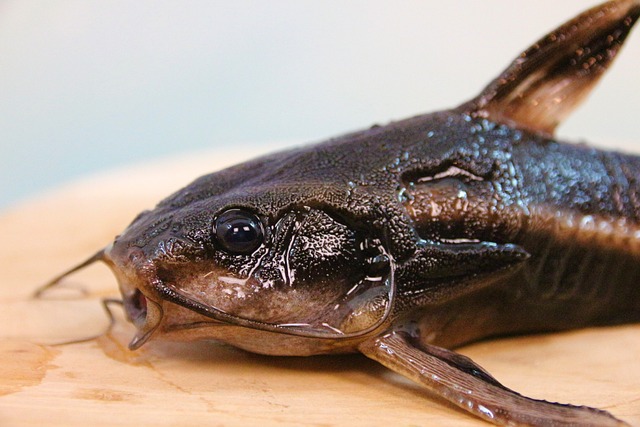
For the best chance to see a thorny catfish in person you’re going to need to head to the Amazon basin region of South America. That’s where these fish are native to, though they are popping up with more and more frequency in rare and exotic aquarium shops these days.
A very peaceful fish, you won’t have a lot of trouble adding a thorny catfish to your underwater world – so long as you have filled it with quality (and soft) substrate that the fish can use to feed in.
You’ll also need to make sure that the aquarium you put one of these fish and has a moderate to fast current and plenty of water (at least 70 gallons) for them to move around in.
Don’t be surprised by the general “lethargy” that this fish shows on a regular basis.
This fish is slow, plodding, and deliberate in most circumstances – but it can show flashes of real athleticism and agility if it has to flee from danger, confront an aggressor, or gobble up food as it falls down to the substrate.
5. Threadfin
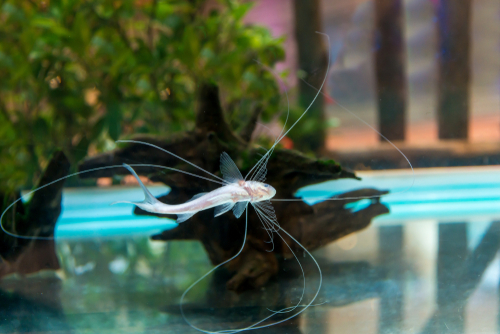
Threadfin fish are (generally) found in tropical and subtropical regions all over the world, with this family of fish containing about 40 individual sub species.
While these fish are generally thought of as quite small (most of the threadfin species are relatively petite, measuring in at anywhere between 4.5 inches and 6.5 inches or so) it’s not at all uncommon for larger threadfin – like the forefinger threadfin or the giant African threadfin – to reach lengths closer to 7 feet!
A super popular fish with sport fishermen and anglers, the threadfin is also very important to those that make their living as commercial anglers, too.
Threadfin of all sub species like to stick together, forming almost unbelievably large schools of fish. That makes it a lot easier and more efficient to catch in larger numbers (critical for commercial fisheries).
6. Thresher Shark
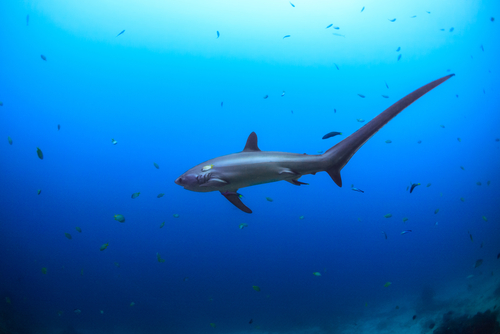
Thresher sharks (sometimes called long tailed or fox sharks) are very large apex predators, though they don’t really have a reputation for being aggressive towards humans.
Found in almost every temperate and tropical ocean on the planet (though in lower and lower numbers every year), the thresher shark is now facing the threat of extinction.
In 2007, the World Conservation Union declared that the thresher shark would be added to the “Vulnerable to Extinction” list – a move that precluded a number of governments around the world protecting these animals legally.
That was the right move, as until that designation the thresher had been one of the most popular sport fish on the planet to go after.
These fish were beloved not only for the trophy aspect of landing gigantic sharks (it’s not uncommon for these sharks to grow up to 20 feet long and weigh nearly 1100 pounds), but they were also hunted for their meat, their skin, and even their fins to be used in soup.
Because these sharks are such solitary creatures – and relatively slow to reach sexual maturity – they had a relatively tough time maintaining their population numbers.
Researchers around the world have been working to boost these numbers, with researchers in the Philippines having a tremendous amount of success (and even capturing the first live thresher birth on camera in 2013).
7. Tiger Shark
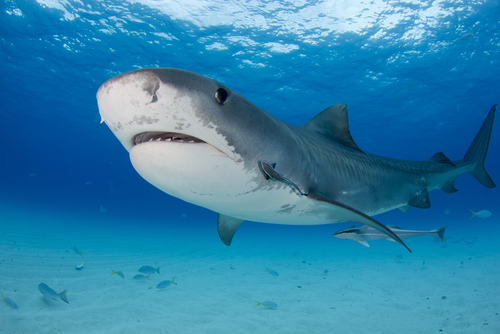
Tiger sharks are the last remaining member of their genus Galeocerdo, a species of requiem shark and one of the largest macro predators on the planet.
Primarily found in tropical as well as temperate waters around the world (but especially in the Central Pacific), these sharks have long, dark tiger stripes all the way up and down their body – which is where they get their name.
A ferocious (but nocturnal) hunter, tiger sharks are known by researchers to have the least picky palate of all the sharks under the sea. They will eat pretty much anything and everything – including other, smaller sharks – which has helped them earn the nickname “garbage eater”.
Very much an apex predator, the only animals in the ocean known to take down tiger sharks with any real consistency are larger groups of killer whales. Even that happens with relative infrequency.
8. Tilapia
Tilapia is the “household” name for more than 100 different species of fish, all of which share a tremendous amount of qualities with one another.
Mainly a freshwater fish that love to live in shallow streams, ponds, and rivers, these fish are beloved for the quality of their meat – as evidenced by the fact that they are the fourth most often eaten fish in the United States (and have been for more than 20 years now).
Though there are more than 100 fish that have this common name, they all sort of fall into three individual buckets – invasive tilapia, aquarium tilapia, and commercial tilapia.
Invasive tilapia are often used by researchers and biologists to control or cutback on aquatic plant life growing wildly. Aquarium species can be difficult to keep but are quite beautiful.
They love to dig up the bottom of your substrate, eat your plants, and are going to race (and even spoke) other fish in the enclosure.
Commercial tilapia, though, are raised and farmed all over the world. Carefully cultivated so that only the fastest growing and “shock tolerant” tilapia procreate, these fish are beloved for their mild but bountiful meat and relatively inexpensive price point.
9. Trout
Believe it or not, trout are close cousins to both salmon and char – which explains a lot of their look, their attitude, and the quality of their meat when eaten.
Technically an “oily” and fatty fish, these fish have been beloved for thousands of years as a food source. Not just for humans, either, but for brown bears, birds of prey, and other animals that like to do a bit of fishing for their dinner, too.
About as popular a sport and game fish as you are going to find, anglers the world over love to chase steelhead trout, big brown trout, rainbow trout, and even little brook trout (often called “brookies” in rivers, streams, and cold water lakes and ponds across the globe.
Fly fishermen in particular love going after trout, with nearly the whole flyfishing community focused almost exclusively on this underwater prey.
10. Tuna
Most people are aware of tuna as a delicious lunchtime snack (or a more decadent luxury entrée), but they may not be aware of the fact that these fish are one of only three species that are able to maintain a warmer body temperature than the temperature of the water around them.
Large fish (frequently measuring longer than 4 feet and often weighing well north of 100 pounds – with yellowfin tuna getting up to 440 pounds), you might also be surprised to learn that these fish are very agile athletes and can scream along underwater at speeds reaching close to 50 miles an hour.
An amazing sport fish, these fish are most frequently gone after by commercial operations – and some would argue that these commercial operations have been pushing native tuna populations a little too hard.
Overfishing is a major issue now, with some tuna (especially the southern bluefin tuna) on the verge of extinction.
65 More Fish That Start with T
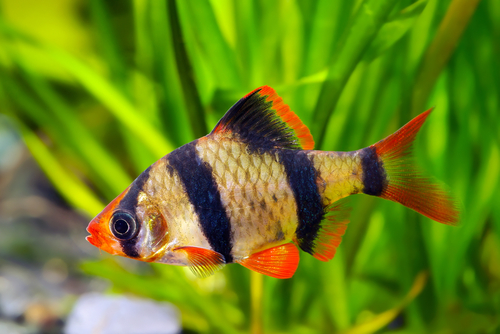
1. Tubeblenny
2. Tube-Snout
3. Tench
4. Tidewater Goby
5. Tripletail
6. Trout-Perch
7. Threespine Stickleback
8. Temperate Ocean-Bass
9. Torrent Fish
10. Titan Triggerfish
11. Tube-Eye
12. Tilefish
13. Tapetail
14. Telescopefish
15. Tadpole Fish
16. Tailor
17. Triplefin Blenny
18. Threadfin Bream
19. Tenuis
20. Topminnow
21. Trewavas’ Neolebias
22. Tigerperch
23. Triplespine
24. Twig Catfish
25. Trahira
26. Torrent Catfish
27. Trumpeter
28. Tubeshoulder
29. Triggerfish
30. Tang
31. Trimac Cichlid
32. Thornfish
33. Tetra
34. Taimen
35. Tui Chub
36. Tiger Shovelnose Catfish
37. Thread-Tail
38. Trevally
39. Trout Cod
40. True Red Congo Tetra
41. Temperate Perch
42. Tiger Barb
43. Tommy Ruff
44. Turbot
45. Tenpounder
46. Tarwhine
47. Trunkfish
48. Turquoise Severum
49. Trumpetfish
50. Toae Cichlid
51. Treefish
52. Torpedo
53. Tretocephalus Cichlid
54. Trewavas’ Mbuna
55. Tripod Fish
56. Toadfish
57. Tiger Tilapia
58. Tire Track Eel
59. Tompot Blenny
60. Three-Toothed Puffer
61. Three Spot Gourami
62. Tonguefish
63. Tropical Gar
64. Tope
65. Tinfoil Barb

Ian Sterling, founder of Fishlab.com, began his aquarium journey over 30 years ago, driven by a deep fascination for fish and their diverse personalities. His website, Fishlab.com, is dedicated to making fishkeeping accessible and enjoyable, offering beginner-friendly guidance, expert insights, and a community for aquarists to connect and share experiences.


